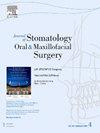口腔微生物群、血液代谢组和炎症蛋白对口腔癌的影响:双向双样本孟德尔随机研究和中介分析。
IF 2
3区 医学
Q2 DENTISTRY, ORAL SURGERY & MEDICINE
Journal of Stomatology Oral and Maxillofacial Surgery
Pub Date : 2025-04-15
DOI:10.1016/j.jormas.2025.102372
引用次数: 0
摘要
目的:口腔癌(OCC)的发病机制复杂,超越了传统的危险因素。虽然观察性研究将口腔微生物群失调、代谢紊乱和炎症与OCC联系起来,但固有的混淆限制了对OCC中假定的“微生物群-代谢-炎症”轴的因果推断。建立因果关系至关重要。方法:我们采用双样本孟德尔随机化(MR)框架,使用大规模GWAS数据来解决这一差距。我们系统地评估了43种口腔微生物类群、1400种不同的循环代谢物和91种炎症蛋白对OCC风险的因果影响。我们对直接影响进行了单变量磁共振(UVMR),对相互作用进行了多变量磁共振(MVMR)调整,并对因果通路进行了中介磁共振剖析。结果:UVMR鉴定出Clostridiales (OR = 0.89)和Rothia sp. ASV0016 (OR = 0.91)的保护作用,并增加了Bacteroidales (OR = 1.09)的风险。此外,60种代谢物(例如,糖胆酸盐增加风险;16α-羟基dheas -3-硫酸盐降低风险)和两种蛋白(胱抑素D增加风险,OR = 1.26;MCP-1降低风险(OR = 0.69)与OCC有因果关系。至关重要的是,中介分析表明,保护性微生物效应部分通过特定代谢物介导,包括5α-雄甾烷-3α,17β-二醇二硫酸盐(Clostridiales)和羧乙基氨基丁酸(Rothia sp.)。结论:本研究提供了强有力的遗传证据,支持特定口腔微生物和代谢物在OCC病因学中的因果作用。它为“口腔微生物组-宿主代谢”轴提供了机制见解,为早期检测和风险评估提供了基于微生物组/代谢物的新型生物标志物的基础,并确定了潜在的预防或治疗靶点。本文章由计算机程序翻译,如有差异,请以英文原文为准。
Effect of the oral microbiota, blood metabolome, and inflammatory proteins on oral cavity cancer: A bidirectional two-sample Mendelian randomization study and mediation analysis
Objective
Oral Cavity Cancer (OCC) pathogenesis is complex, extending beyond traditional risk factors. While observational studies link oral microbiome dysbiosis, metabolic disturbances, and inflammation to OCC, inherent confounding limits causal inference regarding the putative 'microbiome-metabolite-inflammation' axis in OCC. Establishing causality is crucial.
Methods
We employed a two-sample Mendelian randomization (MR) framework using large-scale GWAS data to address this gap. We systematically evaluated causal effects of 43 oral microbial taxa, 1400 diverse circulating metabolites, and 91 inflammatory proteins on OCC risk. We performed univariable MR (UVMR) for direct effects, multivariable MR (MVMR) adjusting for interactions, and mediation MR dissecting causal pathways.
Results
UVMR identified protective effects for Clostridiales (OR = 0.89) and Rothia sp. ASV0016 (OR = 0.91), and increased risk for Bacteroidales (OR = 1.09). Furthermore, 60 metabolites (e.g., glycohyocholate increasing risk; 16α-hydroxy DHEAS-3-sulfate decreasing risk) and two proteins (Cystatin D increasing risk, OR = 1.26; MCP-1 decreasing risk, OR = 0.69) showed causal links to OCC. Crucially, mediation analyses indicated protective microbial effects were partially mediated via specific metabolites, including 5α-androstan-3α,17β-diol disulfate (Clostridiales) and carboxyethyl-GABA (Rothia sp.).
Conclusions
This study provides robust genetic evidence supporting causal roles for specific oral microbes and metabolites in OCC etiology. It offers mechanistic insights into the 'oral microbiome-host metabolism' axis, providing a basis for novel microbiome/metabolite-based biomarkers for early detection and risk assessment, and identifying potential preventative or therapeutic targets.
求助全文
通过发布文献求助,成功后即可免费获取论文全文。
去求助
来源期刊

Journal of Stomatology Oral and Maxillofacial Surgery
Surgery, Dentistry, Oral Surgery and Medicine, Otorhinolaryngology and Facial Plastic Surgery
CiteScore
2.30
自引率
9.10%
发文量
0
审稿时长
23 days
 求助内容:
求助内容: 应助结果提醒方式:
应助结果提醒方式:


